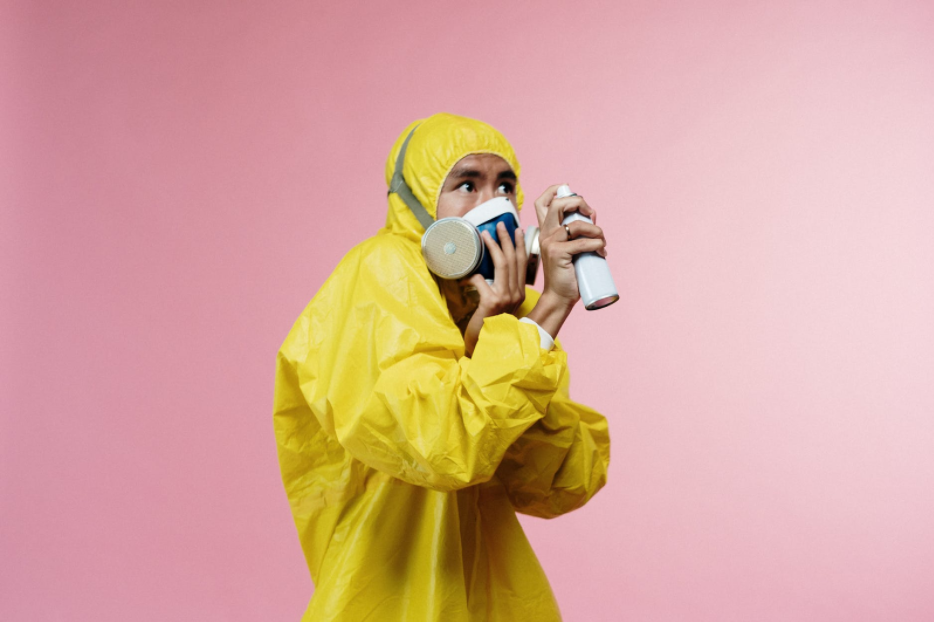Sexually transmitted infections, or STIs, are conditions typically passed from one person to another through sexual contact.. Despite their name, it is possible to transmit STIs through non-sexual interactions; however, non-sexual transmission of STIs is less common and often treatable. Misunderstanding what constitutes sexual activity, poor hygiene practices, and transmission from a pregnant parent to their child are all different ways in which people may transmit or contract STIs. If you or someone you know has an STI or you think you may have contracted one, see a doctor as soon as possible to treat and limit the potential spread of the infection.
Table of Contents
Defining Sexual Contact
Because the dominant views on sexuality often place the majority of their focus on penetrative sex, people may falsely assume that other forms of sexual contact do not carry the same risk for STIs. Other forms of sexual contact can carry a similar risk of STI transmission to penetrative sex, and this risk must be taken into account when engaging in any sexual contact.

Oral Sex and Kissing
Oral sex, which includes contact between the mouth and a penis, vulva, or anus, is an activity that puts people at a risk of contracting or transmitting STIs. The mucous membranes inside your mouth can usually prevent infection during oral sex or kissing, but if these membranes are torn they can facilitate the transferral of STIs. The exchange of bodily fluids during any type of activity can allow for the transmission of STIs; when these fluids are exchanged during oral sex, partners are at risk of contracting STIs, particularly if these mucuous membranes are torn. Condoms and dental dams should therefore be used during oral sex. Cuts in the mouth and skin-to-skin contact can allow for the transmission of STIs such as syphilis, gonorrhea, human papillomavirus (HPV), human immunodeficiency virus (HIV), and more.4 While it is rare that kissing can transmit STIs, it is still possible as the direct oral contact involved in kissing can transmit STIs such as herpes simplex virus (HSV), infectious mononucleosis, and more.7
Contact Without Clothing
Contact without clothing such as manual stimulation or foreplay involve skin-to-skin contact which can lead to STI transmission as well. Openings such as sores allow for the transmission of infected body fluids, which can lead to the transmission of STIs. Genital touching with or without sex can lead to the transmission of STIs like syphilis and herpes.5
Indirect Transmission of STIs
While it is more likely to contract an STI through direct oral or skin to skin contact, it is possible to transmit STIs through indirect contact as well. The following are examples of how STIs may be transmitted through indirect contact.

Sharing Clothing and Hygiene
HPV is generally transmitted by skin-to-skin contact and has the potential to be transmitted non-sexually through fomites. Fomites are objects or materials likely to carry infection, including utensils and clothing.3 An HPV is a tough virus which is repellent to heat and drying.3 This allows them to live on for days on things such as clothing. Most individuals who are infected with HPV do not know they are because they are asymptomatic. HPV DNA has also been found on the fingers of infected persons or under their fingernails and people may not know they have this on their hands which can be indicative of poor hand hygiene.3 Touching someone who isn’t aware they are infected or sharing clothing, bedding, or other fomites may lead to contracting HPV non-sexually. Douching refers to the act of cleaning the vagina with water or other mixtures of fluids. It involves squirting these fluids, which are called douches, into the vagina. Douching can cause bacterial vaginosis (BV) as well as increase the risk of contracting STIs. Douching can increase the chances of contracting an STI because douching removes normal bacteria that protects against STIs.2 Due to the increased risk and the bodies ability to naturally clean the vagina, most doctors recommend that people with vulvas do not douche.
Sharing Drinks
While it is rare to contract an STI through a shared drink, While rarer than contracting an STI from oral sex or from kissing, the risk of transmitting an STI via saliva in the mouth means that it is still possible to contract an STI in this way from sharing a drink. Activities like sharing utensils, cigarettes, and other items that carry saliva pose a similar risk. This can also occur when sharing a cigarette. HSV and in particular, HSV-1 in particular as well as infectious mononucleosis as seen with kissing, can be transmitted non-sexually by sharing something which contains saliva. While kissing would be considered contracting an STI from direct oral contact this would be considered contracting an STI from indirect oral contact.7
Sharing Needles
While other forms of non-sexual contact carry less risk of transmitting STIs, sharing needles is a very high-risk activity for contracting blood-borne diseases such as HIV.4 Medical procedures involving unsterile cutting or piercing equipment are similarly high-risk activities. Any instruments or tools that come into contact with blood must be safely disposed of or sterilized in order to avoid this non-sexual transmission of blood-borne infections. STIs such as chlamydia and gonorrhea are not typically transmitted via blood and are therefore not going to be contracted by this activity.
Douching and Sex Toys
Both douching and the use of sex toys which have not been cleaned can lead to the spread of STIs.1,2 Douching can cause bacterial vaginosis (BV) as well as increase the risk of contracting STIs. Douching can increase the chances of contracting an STI because douching removes normal bacteria that protects against STIs.2 Due to the increased risk and the bodies ability to naturally clean the vagina, most doctors recommend that people with vulvas do not douche. Sex toys can also be a source of STI transmission when people share their sex toys without practicing proper hygeine. Hygienic sharing of sex toys involves the use of condoms for vaginal, anal, and oral sex, and the changing of condoms between each sexual act. It also involves cleaning sex toys thoroughly before and after each use. The sharing of uncleaned sex toys without using condoms highly increases the likelihood of transmitting STIs as users would become introduced to potentially infectious body fluids. Sex toys may also get scrached or broken and cracks can hide harmful bacteria and viruses, so you must check your sex toys and be quick to replace them if they are at all chipped, scratched, or broken.1
Autoinoculation
Autoinoculation describes the spread of infection from one part of the body to another, uninfected part of the body. This can happen when a person is infected with HPV, touches their genitals, and then touches their eyes. The eyes can become infected as well. While this is not possible with all STIs, it remains a possibility and should be kept in mind. HPV can be transmitted through the fingers, mouth, skin contact, and more Keeping hands clean and away from any infection in the body can prevent autoinoculation.3
Pregnancy and Beyond
Because pregnancy is often not thought of in conversations about sex, many do not consider how contact with sexual organs such as the vagina and breasts are involved in pregnancy and raising an infant. The following are examples of how STIs may be transmitted via childbirth and breastfeeding.
Childbirth
When a pregnant person is infected with an STI, they can pass the infection to their infant during vaginal childbirth. This is referred to as vertical transmission. STIs such as HPV,3 gonorrhea, chlamydia, hepatitis B, and genital herpes can all be passed from the parent to the infant as the baby passes through the vaginal canal. Other STIs such as syphilis, however, can be passed to the child from the mother by crossing the placenta and infecting the baby in the womb. HIV can cross the placenta during pregnancy and infect the child during delivery. A doctor may test you for STIs early in your pregnancy and again closer to childbirth to prevent complications. If a person is suffering from an STI at the time of childbirth, doctors can decide to perform a cesarean section in order to avoid transmitting the infection to the baby.6
Breastfeeding

Some STIs can be transmitted to an infant through breastfeeding. HIV is carried by breast milk; therefore, people with HIV should not breastfeed to avoid passing the infection to a child. Syphilis and herpes can cause open sores and chancres on other parts of the body besides the genitals, so if a sore is present on or near the nipple, people with syphilis or herpes should not breastfeed. However, syphilis and herpes infections are not carried via breast milk and as long as no sores are present, they will not be spread to an infant in this way. Gonorrhea, chlamydia, and HPV cannot be transmitted via breast milk and breastfeeding while infected with one of these STIs is considered safe. Parents with trichomoniasis can also breastfeed, but they must first take the antibiotic metronidazole.6

Prevention
To prevent the spread of STIs, barrier methods of contraception should be used every time any kind of sexual activity occurs. Barrier methods, which include condoms and dental dams, are the only form of contraception that help to protect against STIs. Good hygiene also helps prevent the spread of STIs. Washing hands frequently (especially before and after touching the genitals of other people and after using the restroom), cleaning sex toys and putting condoms on them before each use, and washing clothing and other fomites regularly can greatly improve personal hygiene and dramatically decrease the chances of transmitting STIs or any other types of infections. Needles and other objects that come into contact with human blood should not be shared, as this is one of the most high-risk ways to contract an STI non-sexually. Sexually active individuals should get tested often and communicate with potential partners about their STI status. STIs do not always produce symptoms, so a person could spread an STI without even knowing that they have one.3 Once a person knows they have an STI, treatment should be sought out immediately. Many STIs can lead to dangerous complications if left untreated. The longer the infection is ignored, the more people could be at risk for contracting it. While being treated for an infection, it is crucial to take any medications exactly as instructed by a doctor or clinician. A patient should never stop taking medication before they are instructed to do so. This could cause the body to be resistant to medications and contribute to the development of antimicrobial-resistant infections.
Concluding Remarks
In general, the transmission of sexually transmitted infections results when mucous membranes of one individual (such as those in the mouth, eyes, or genitals) come into contact with the semen, vaginal fluid, genitals, and sometimes blood, of an infected person. The spread of STIs is not typically facilitated by everyday objects, public places, or skin on other parts of the body that are not the mouth and genitals, except under some special circumstances. Although some non-sexual modes of STI transmission are possible, they are not common. Almost all STI transmission can be avoided by participating in hygienic activities as a part of healthy living.
References
- Cazacu, E.C.C., (2012). Sex toys. Mental Health Practitioner’s Guide to HIV/AIDS (pp. 365-367).
- (2019, April 1). Douching. OASH.
- Petca, A., & Borislavschi, A., & Zvanca, M.E., & Petca, R.C., & Sandru, F., Dumitrascu, M.C. (2020). Non-sexual HPV transmission and role of vaccination for a better future. Spandidos Publications.
- Queirós, C., & Costa, J.B. (2019). Oral transmission of sexually transmissible infections. Acta Médica Portuguesa.
- (2019, June 11). Sexually transmitted infections. OASH.
- (2019, April 1). Sexually transmitted infections, pregnancy, and breastfeeding. OASH.
Yadav, V., & Rajput M., Diwaker, R.P., & Kumar, R. (2020). An overview of transmission of diseases in special reference to COVID-19 and potential targets to control this pandemic. HSOA.
Last updated: 3 March 2022
